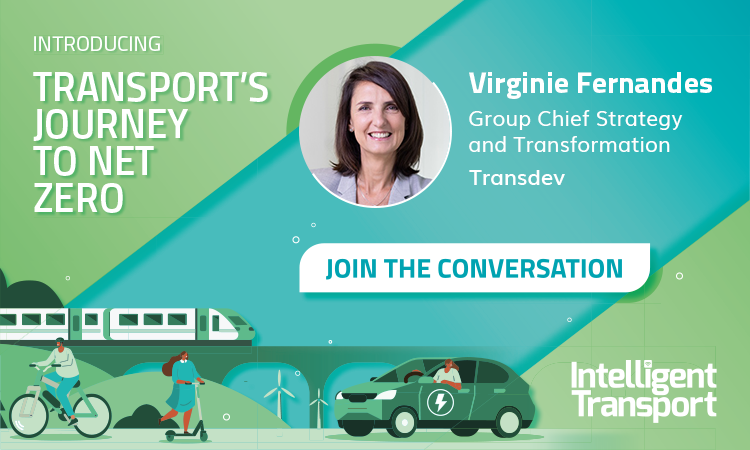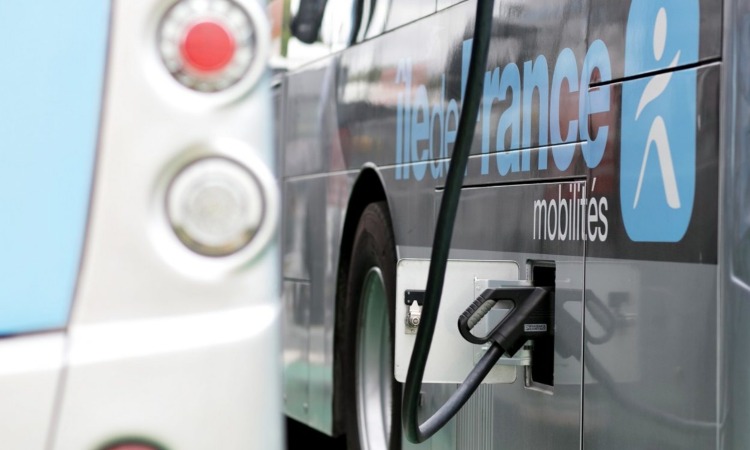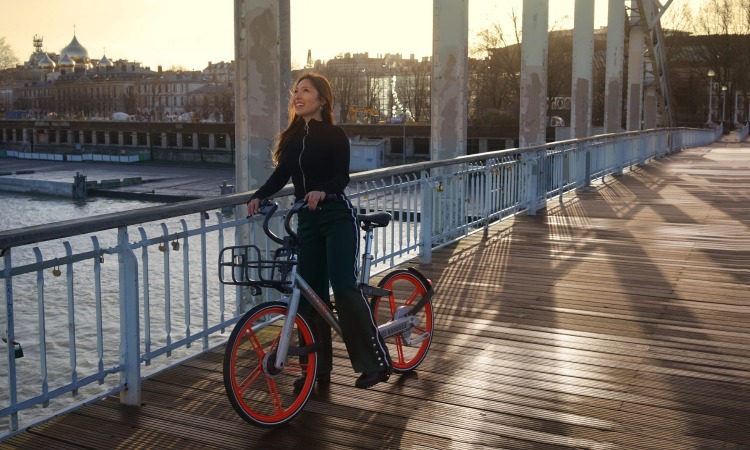Transport’s journey to net zero: Alternative fuel vehicles are vital to achieving climate targets, says Transdev
- Like
- Digg
- Del
- Tumblr
- VKontakte
- Buffer
- Love This
- Odnoklassniki
- Meneame
- Blogger
- Amazon
- Yahoo Mail
- Gmail
- AOL
- Newsvine
- HackerNews
- Evernote
- MySpace
- Mail.ru
- Viadeo
- Line
- Comments
- Yummly
- SMS
- Viber
- Telegram
- Subscribe
- Skype
- Facebook Messenger
- Kakao
- LiveJournal
- Yammer
- Edgar
- Fintel
- Mix
- Instapaper
- Copy Link
Posted: 21 October 2022 | Virginie Fernandes - Transdev | No comments yet
In the latest instalment of Intelligent Transport’s exclusive sustainable transport Q&A series, Virginie Fernandes, Group Chief Strategy and Transformation Officer of Transdev Group, discusses the key innovations and projects that the company is working on to decarbonise its public transport fleet, as well as what she hopes to see as part of a carbon neutral future, as the transport sector strives to achieve its net zero carbon emissions targets by 2050.


The ever-pressing challenges of poor air quality and traffic congestion have been a key focus for the transport industry, as operators and authorities strive to achieve their net zero targets. How big a part does the decarbonisation of public transport play in reducing France’s carbon emissions?
The transportation sector represents some 30 per cent of greenhouse gas (GHG) emissions worldwide, of which 45-60 per cent are emitted by passenger cars. So, naturally, decarbonisation is on the top of the agenda for all nations and public transportation operators, including Transdev. Our priority, then, is to increase ridership, which in turn decreases the use of passenger cars as we continue on the decarbonisation path of shared mobility that we offer in the communities that we serve.
Our own commitment by 2030, within our ‘Moving Green’ strategy, is to reduce our CO2 emissions by 30 per cent and to increase our alternative fuel fleet (non-diesel) by 50 per cent”
Climate change and climate neutrality are clearly the priority for everyone across the globe in order to limit global heating to +1.5°C by 2050. With the overall acceleration and hardening of regulations and commitments worldwide, and in Europe with the ‘Fit for 55’ programme, we are already working hard to meet upcoming net zero and carbon neutrality targets. Our own commitment by 2030, within our ‘Moving Green’ strategy, is to reduce our CO2 emissions by 30 per cent and to increase our alternative fuel fleet (non-diesel) by 50 per cent. In 2021, we increased the share of our alternative fleet by 24 per cent compared to 2018.
Like many nations, France has embarked on a long-run path of GHG and pollutants reduction within the public transportation sector. At this stage, electric buses still represent a marginal part of our fleet, while gas- and biogas-powered buses are being massively deployed, particularly in the Greater Paris Region. This transition to a growing energy mix represents a major shift both on the day-to-day management and on the operations side, where bus depots are being progressively converted from all diesel vehicles to gas, renewable biogas and electric vehicles.
Furthermore, the continued deployment of mass transit electric modes (light-rail, regional trains, metro lines) will continue to contribute to reducing the carbon footprint of public transportation in France, in many communities across the country. Transdev is and aims at remaining a leading player in the market.
What are the immediate challenges that Transdev is facing in decarbonising its public transport fleet?
The main challenges faced by Transdev in decarbonising its global vehicle fleet is mainly linked to the speed at which the conversion of the fleet can be made, which is largely dependent on local regulations and the appetite of clients. We have all the expertise to support them, but the main challenge is their willingness to accelerate the energy transition of their vehicle fleets. This means transitioning from an almost all-diesel fleet to a fleet composed of a growing mix of energies such as gas, biogas, biofuels, battery-electric and hydrogen-electric fuel cell vehicles.
With public transportation vehicle fleets deployed over long periods, another challenge is phasing this conversion and managing a mixed energy fleet with depot conversions to gas, biogas and electric”
With public transportation vehicle fleets deployed over long periods, another challenge is phasing this conversion and managing a mixed energy fleet with depot conversions to gas, biogas and electric, in coherence with the local field and, more specifically, with the green energies available in the country. Looking at long-term planning, the budgetary equation needs to be met so that zero emission solutions align in the long run with the total cost of operation (TCO) of traditional powered vehicles that use internal combustion engines, whether they use diesel, gas/biogas or biofuels.
For battery-electric buses, TCO is now almost equivalent to its diesel counterpart, with a proven track record on the field in several markets. When we started deploying battery-electric buses in the Netherlands, we commenced operations in 2015 with some 25 buses. Now, we have reached more than 500 buses, which have been deployed in various communities and have allowed us to secure invaluable experience and expertise. The lessons learned can be applied through our Zero Emission Team in our key markets worldwide. In the meantime, we are now operating over 1,800 electric buses and coaches globally, while our hydrogen-powered fleet already counts over 50 vehicles in operation in France, the Netherlands, Sweden and New Zealand.
For hydrogen, zero emission means from well to wheel, so the main challenge will be to use green hydrogen produced using renewable energies such as solar, wind power and hydraulic, while low-carbon nuclear power can also be used, where France still has a lead.


Credit: Transdev
What projects does Transdev currently have in the pipeline that will help to achieve a more sustainable transport system in France and more globally?
In France, we have been working together for many years with public transit authorities to explore all solutions and work on the transition path from diesel to a mix of non-petrol-based energies, including biogas, biofuels, battery-electric and hydrogen-powered buses and coaches. Across the country, priorities may differ; however, clearly the path to low emissions and zero emission is already widely in the works. With gas now considered in Europe as a transition energy, we are working closely with transit authorities to broadly transform our fleets and depots.
We have key hydrogen operations in The Netherlands and trials in Sweden and New Zealand. We consider hydrogen as the next frontier for clean zero-emission mobility”
An example of this is in the Greater Paris Region, where the transit authority Ile-de-France Mobilités has partnered with Transdev to convert 28 bus depots to gas and renewable biogas by 2024. With currently 400 gas/biogas-powered buses and coaches operated by Transdev in the region, this now already represents 10 per cent of our global fleet of 4,000 vehicles and growing. Transdev Sénart is one of the most striking examples for conversion from diesel to gas and biogas in the Greater Paris Region, with over six million passengers per year. This network now has a fleet of 30 gas and biogas powered buses, representing 25 per cent of our 120 strong bus fleet.
On the zero emission hydrogen front, Transdev has been the pioneer in France in public transportation, with the first urban bus line operational in northern France since 2019; while, in the meantime, other such deployments have taken place in Burgundy, Normandy and at Toulouse-Blagnac Airport.
Elsewhere, we have key hydrogen operations in the Netherlands and trials in Sweden and New Zealand. We consider hydrogen as the next frontier for clean zero emission mobility; however, the main barrier here remains the cost of such deployments, which have so far limited their deployment to small-scale operations.
Although public transport has seen a global increase in ridership post-pandemic, car use continues to be more resilient. What is being done to encourage modal shift from the private car, and how significant is improving active travel and public transport infrastructure in achieving this?
With most of the world’s population now living in large cities and major urban areas, whatever the continent, there is no way around promoting public transit and multimodality. This means having the right public transit offer where people actually live – in the outskirts and the greater suburbs. The advances made by digital applications have triggered the launch of Mobility-as-a-Service (MaaS) in major urban areas, such as Moovizy which was launched by Transdev in Saint-Etienne (France) in September 2020. Such multimodal applications enable passengers to make the best use of the entire mobility offer available in their community, favouring modal shift, all the while using a single mobile app.
The majority of the time, people rely on their individual car when there is no transportation offer in their neighbourhood. So, it all comes down to having the right offer, at the right location. One key solution to this is to broaden the availability of Park & Ride solutions coupled with an efficient mass transit offer. People would then use their car for only a short part of their journey to board, for example, a bus rapid transit (BRT) offer, which will bring them into town using dedicated lanes or to reach the nearest train or light-rail network.
One key solution to this is to broaden the availability of Park & Ride solutions coupled with an efficient mass transit offer. People would then use their car for only a short part of their journey”
The central issue is that public policies today remain too focused around the individual car (even fully electric) and that the policy to reduce emissions from the transportation sector is all about electric cars and clearly not enough about public transportation. Therefore, increased public investments in public transportation and infrastructure are absolutely paramount. In the end, Transdev has a huge role to play, to make public transport more efficient and comfortable so that people will achieve the necessary modal shift from their individual car to public transportation.
At the same time, it is necessary to shift to more environmentally friendly modes, such as active modes including bikes and e-bikes etc., where Transdev is a key player. These active mobility solutions, which can be part of MaaS, will mainly attract riders in dense urban areas and their impact will, however, remain marginal on a global scale.


Credit: Transdev
In an ideal world, what would a net zero transport system look like to you?
Instead of an ideal world, let’s simply try imagining our mobility world in 2050, when we will have reached net zero carbon emissions.
In the end, our mobility in 2050 will have been for the sustainability of our cities, our planet and our common good”
With fossil fuels ruled out by then, our energy sources will rely solely on energy producing ultra-low CO2 emissions, such as nuclear power or renewable energies (biogas, biofuels, solar, wind power, hydraulic). Battery-electric vehicles will have totally replaced vehicles using internal combustion engines in dense urban areas and metropolises, while green hydrogen will be massively produced using these non-fossil energy sources. This hydrogen will be widely used in heavy transportation and long-distance modes (coaches, bus rapid transit, regional trains, vessels, etc.) as well as in individual cars and e-bikes – or should we then call them h-bikes? Congestion and pollution levels would be reduced to acceptable levels, the air we breathe would be cleaner with positive effects on the population’s health.
With a bit of imagination, we can also foresee that a growing number of individual and shared mobility modes will be fully electric, connected and featured with some (extended or full) level of autonomy, relying on algorithms and artificial intelligence (AI) – ensuring safer, quieter and more predictable mobility in terms of travel times. It is quite easy to imagine entire driverless metro lines, light-rail, BRT on dedicated lanes, shuttles and individual cars in our cities and metropolises, where some two-thirds of the world’s population is expected to be living.
In 2050, shared mobility would be expected to surpass individual mobility and enable populations in dense urban and suburban areas to enjoy much more comfortable mobility, commutes etc. In addition, depending on the extent of working from home and new home-office practices, we will be shifting from constrained mobility to chosen mobility.
In the end, our mobility in 2050 will have been for the sustainability of our cities, our planet and our common good.


Virginie began her career in 1998 at EY as a financial auditor. From 2000, she worked as a financial analyst, first at Oddo Securities and then at Crédit Agricole Cheuvreux from 2006. In January 2010, she joined the Caisse des Dépôts Group in the finance department of the Fonds Stratégique d’Investissement. In 2012, Virginie took up the position of Head of the Real Estate, Housing and Tourism division within the Finance, Strategy and Investments Department of Caisse des Dépôts. Since February 2017, prior to joining Transdev, she had been Director of Strategic Investment Management.
Related topics
Air Quality, Alternative Power, Artificial Intelligence, Connected & Autonomous Vehicles, Micro-mobility, Mobility Services, Multimodality, Passenger Experience, Public Transport, Sustainable Urban Transport, Transport’s Journey to Net Zero Series
Related modes
Bikes & Scooters, Bus & Coach, Light Rail, Metro, Rail
Related countries
France, New Zealand, Sweden, The Netherlands
Related organisations
Ile de France Mobilités, Transdev, Transdev Group, Transdev Sénart
Related people
Virginie Fernandes








